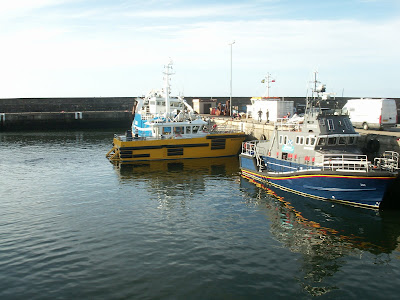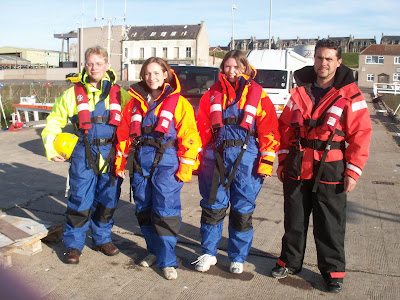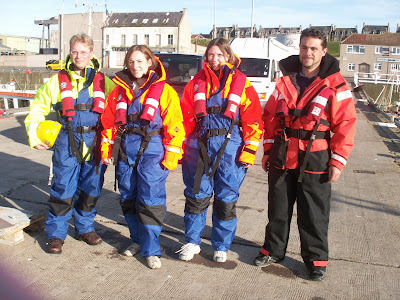When we return to Brussels at the end of this month one of the key issues we will have to deal with in the Parliament’s Energy Committee is the Commission’s proposed energy and climate change package. The Parliament’s Energy Committee is set to vote on the Commission’s proposals for promoting and increasing the use of renewable energy across the EU and we have been working closely with Scotland’s energy industry back home to ensure that Scotland’s distinctive approaches to energy challenges and opportunities are recognised in European policy.
Back in July 2006 we brought Europe’s Energy Commissioner, Andris Piebalgs to Scotland to see for himself how we are pioneering green energy technology. The Commissioner went offshore to the Beatrice oil platform and then to Nigg to see the offshore wind turbines that were being built as part of the Downvind Beatrice wind farm demonstration project part funded by the EU and the UK and Scottish Governments. This project saw the development of Europe’s largest-scale offshore wind farm development. The two demonstrator wind turbines are adjacent to the Beatrice oil field.
I also had the opportunity to see the turbines when I was at Nigg with the Commissioner and when I was up North last week I managed to see the two Beatrice offshore wind turbines sitting out in the Moray Firth, 25km from shore.
Beatrice showed what was possible to achieve by taking the technologies and various methods and practices developed already for offshore oil and gas and applying them to deep water offshore wind farm development. The old and the new, the dirty and the clean industries working together.
Since then the team that worked to develop the Downvind project have gone on to become “Seaenergy renewables”, one of the newest companies in Scotland to focus specifically on offshore wind developments and to be at the forefront of the offshore wind industry not just in Europe but across the world.
I travelled up to Aberdeen yesterday to meet the team, whom I had first met back in 2006, and after being briefed we headed up and across to Buckie for me to be given a chance to go out in one of the boats that Sea energy is looking to use when it comes to doing any repairs on the wind turbines.
Below is the wind cat work boat I went out into the Moray Firth on (its the yellow one in the middle)– this is a series 7 wind cat, which can do a top speed of 28 knots and a cruising speed of 25 knots.


 Aileen, Kay (Seaenergy renewables), Florian and Chris in our survival gear
Aileen, Kay (Seaenergy renewables), Florian and Chris in our survival gear

The opportunity for Scotland to lead the way in offshore wind is immense. Many lessons have been learnt from the Beatrice Downvind project in terms of developing the technology and while many skills have been transferred from the oil and gas industry, the one thing that struck me was the need for skills from the fishing industry. If you have a deep water offshore wind farm development out in the middle of the sea they will need to be repaired and that requires people who have an understanding of the sea to be able to cope with difficult weather conditions out at sea along with people who have a head for heights to climb inside the turbine to do the necessary repairs. When we were out in the Moray Firth, the waters were fairly calm though the swell was fairly strong and the boat which can do a top speed of 25 knots was certainly bouncing along at 22 knots. In the distance I could see the Beatrice wind turbines but the strong swell was certainly doing nothing for my stomach and we returned to the harbour.
This is an industry waiting to take off and I was glad to have the opportunity to meet with the team who are working extremely hard to make this a reality and to experience for myself some of the issues that such an industry will have to address. Gaining a better insight in to the development of the offshore wind industry is something I greatly appreciate and look forward to taking this back with me to Brussels the week after next.
Aileen, Kay (Seaenergy renewables), Florian and Chris in our survival gear

No comments:
Post a Comment